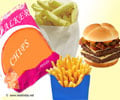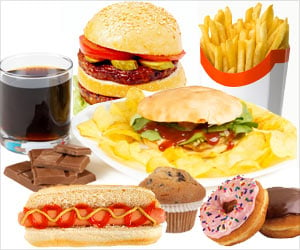- A research team from The University of Bristol has identified the environment that promotes consumption of non-core foods by adolescents.
- Most adolescents consume non-core food groups at eateries when socializing with their friends.
- Parents should cultivate a friendly diet and incorporate some variety into the diet of their adolescents to prevent them from eating non-core food groups at eateries.
Non-Core Foods
A healthy diet should include the five core food groups and the Australian Food and Nutrition Monitoring Group recommends that adequate servings from each group should be consumed every day to fulfill the requirements of the body. Foods that do not fit into these groups are called non-core groups. According to the group- 1–2 servings of food from the non-core foods and beverages per day may be consumed by children up to 11 years with an upper limit of 3 serves for older children. The energy equivalents of this in children under 11 years is 1200 kJ.
- There is increased consumption of pies, pizzas, cakes and biscuits along with soft drink consumption among children aged between 10 and 15 years.
- One-third of 2-18 years old children did not eat any fruit
- 20% of the children who were included in the survey did not eat any vegetables on the day before the interview
- One-third of the patients consumed snack foods like potato crisps
- Over a half of the children consumed confectionery
- Over 70% of the children ate cakes, pastries and confectionaries
- Among the food consumed by the children, only bread could be considered a core food. The other food items consumed included pies, pizzas, hot chips, sandwich spreads, biscuits and drinks.
Identifying the Source of Non-Core Foods
The research team from Bristol led by Zoi Toumpakari analyzed data from the UK National Diet and Nutrition Surveys 2008-12 which included 884 adolescents. The food diary of the adolescents over a period of 4 days was used. The diaries included details about- the occasion (EO) in which non-core foods were consumed
- 'where' (eateries, school ) and 'with whom' (e.g. friends, parents) the food was consumed
- fast food outlets, cafes and restaurants- 'eateries' were an important source of non-core food for adolescents.
- the intake of non-core food was 2.5 times higher in eateries when compared to consumption at home.
- the intake of non-core food was twice as high in schools when compared to that consumed at home.
- Adolescents found the food options at eateries more interesting than at home
- Eateries provided an opportunity to socialize with friends
- Adolescents associated healthy eating patterns with parents while unhealthy eating patterns were associated with friends
- Adolescents conformed to eating patterns followed by their friends so that they did could belong
- Adolescents prioritized other activities like going to the movie theatre or the shopping mall and, therefore tended to choose ‘fast’ food that had the connotation of being quick.
What level of non-core food groups consumption was identified by the research team?
- 39·5 % of total energy intake was from soft drinks, chips, biscuits, savory snack and chocolates
- 57·0 % of adolescents ate non-core foods at eateries
- 51·3 % of adolescents ate non-core foods with friends
- 33·2 % adolescents ate non-core foods at home
- 32·1 % adolescents ate non-core foods with parents
Targeting the Source of Non-Core Foods
The study showed that adolescent eating patterns were dictated more by the occasions that they were involved in, like shopping or going to the movie, rather than specific food selection. Therefore, the results of the study could be used to improve the quality of food served in such places, especially at school, rather than targeting individual children. Eateries are frequented by adolescents as they see it as an opportunity to socialize. Effective interventions could be aimed at lowering portion sizes at such eateries which will lower consumption of non-core food groups.The authors stated that improving the environment at home, making it conducive to adolescent eating habits and lowering repetitive dishes will encourage adolescents to eat at home more often. A sociable and relaxing environment could be created at home, which will make adolescents socialize with their friends at home, rather than outside.
References:
- Adolescents' non-core food intake: a description of what, where and with whom adolescents consume non-core foods - (https://www.ncbi.nlm.nih.gov/pubmed/26878965)
















